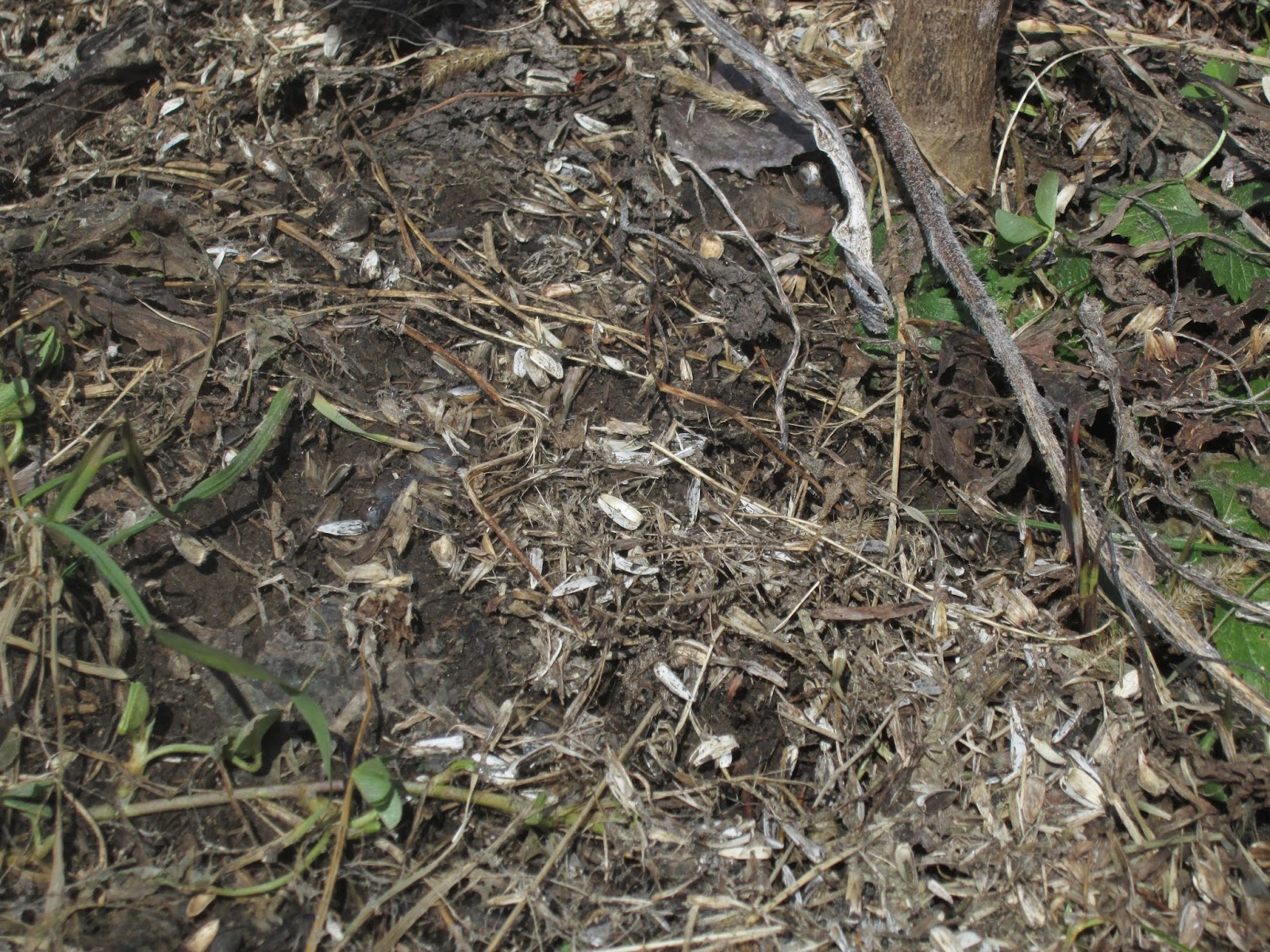A few weeks ago I volunteered to be a Citizen Activator with 100 in 1 Day
100in1day.ca/toronto/ which is happening on June 7 in Toronto. The project is headed by the indefatigable Aurelia Dalinda of Evergreen Cityworks. As a leader she is irrepressibly positive and enthusiastic and with a wealth of energy (all those 10 PM Sunday night emails!). The project has been wonderful to be a part of but it has challenged me as well. It has not been a great match for my strengths (grunt work and manual labour par excellence) and has highlighted my weak digital technology skills ( what
is a Dashboard anyway??) But I have met wonderful people. As Andrew Simpson, another of our Citizen Activators noted at Tuesday's meeting, "We're a friendly bunch!"
So I was thrilled when Andrew invited me to join a local Intervention - Pollinator Seed Bombs to be distributed in the two parks, Riverdale Park East and Withrow Park, that border our neighbourhood. "
Kids to make signs with pollinator fun facts to be placed in gardens and lawns.
Seed ball assembly (Farmer’s Market activity) and “distribution” in vacation lots and gardens." Finally something I can do! I volunteered to collect seeds from our farmhouse for the seed bombs.
We are lucky to have Dave Harvey of Park People as a neighbour. A few weeks ago he convened a meeting to see if there was interest in forming a group, Friends of Riverdale Park East. So this intervention fits in perfectly with our nascent Neighbourhood initiative.
Currently there is an initiative by the David Suzuki Foundation, Got Milkweed, to plant milkweed plants to expand habitat for the increasingly endangered monarch butterfly. They have now sold out their plants. But at our farmhouse we have a whole milkweed meadow so I was happy to go out and collect seedpods.
 |
| Our milkweed meadow |
At this time of the year many of the seedpods have burst and done their job of spreading seeds. But for the ones that are still intact there are many challenges to removing the seed. The milkweed seed is a perfect vehicle for distribution by wind with its helicopter-like fluff attached to each seed. Wearing a black turtleneck while separating the seeds from the floss highlights the aerodynamic success of the fluff.
 |
| A milkweed stalk with many seedpods still intact |
 |
| A slightly less mature seedpod where the seeds can be easily rubbed off |
 |
| A more mature seed with helicopter floss attached |
In addition to milkweed I am collecting hollyhock, cardinal climber and garlic chive seeds.
 |
| Garlic Chive seeds |
 |
| Cardinal Climber Seeds |
 |
| Hollyhock seeds |
I have always been interested in attracting birds and pollinators to the farmhouse. So we have many flowers and flowering shrubs to attract the maximum number of visitors possible. Pollinators are crucial to a vegetable garden, especially when using open pollinated seed. It is a win-win scenario; the plants attract pollinators and the pollinators find the food they need. So bees, birds, butterflies are all welcome. The more the merrier. It is best to plant open-pollinated seeds rather than hybrids.
 |
| Single hollyhocks with bee balm |
 |
| Cardinal Climber |
We have observed over the years that, contrary to the oft-quoted wisdom, hummingbirds really don't restrict their attention to red flowers, although they do love red bee balm and cardinal climbing flowers.
Big fat bumblebees positively bathe and cavort in many different flowers as the season progresses. Their buzz can be almost deafening.
 |
| Bumblebee at the bee balm (monarda) |
 |
| And then it moves to the hollyhocks |
Bees, birds and butterflies all enjoy a variety of pollen and nectar and the best approach is to plant a diverse number of flowers and flowering shrubs so that they have food throughout the season. The buffet starts out with lupines and flowering shrubs moving on to hollyhocks, bee balm, sunflowers, milkweed, Joe Pye Weed and garlic chives as the season progresses.
 |
| Bumblebees at the Lupine in June |
 |
| And at the Mock Orange in June |
 |
| The Mock Orange also attracts butterflies - here a Yellow Swallowtail |
 |
| A monarch butterfly at the Preston Lilac which blooms about three weeks after the common Syringa vulgaris |
 |
| Butterflies at the Golden Ninebark |
Butterflies need various plants for their caterpillar stage.
 |
| A butterfly caterpillar on the parsley - I think it's a Yellow Swallowtail |
Wouldn't it be wonderful if Parks and Recreation could be persuaded and inspired to plant their flower beds with flowers for pollinators and add flowering shrubs to their planting plans for our parks.
 |
| My pollinator friendly vegetable garden in August |
Join a March Against Monsanto on Saturday May 24 at 11AM at Queen's Park.

















































